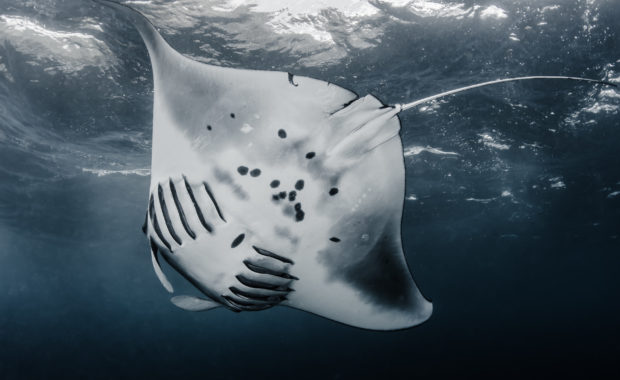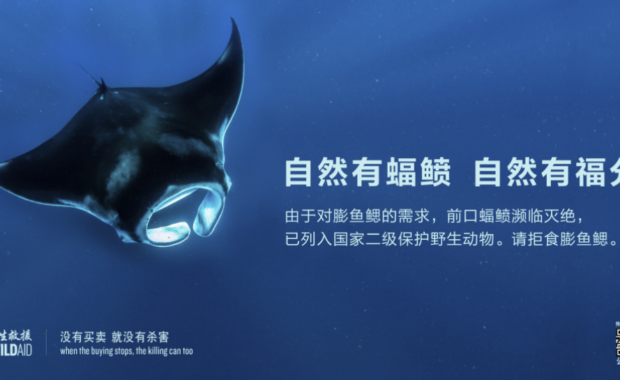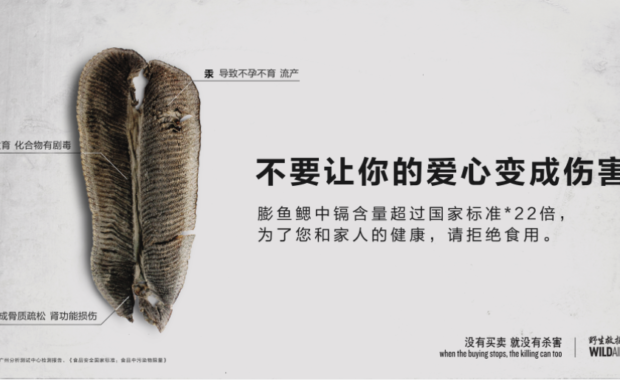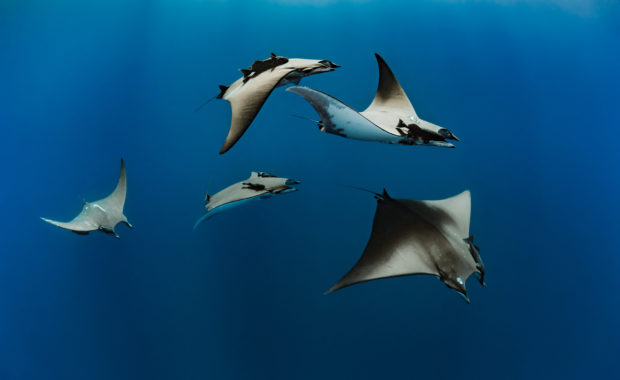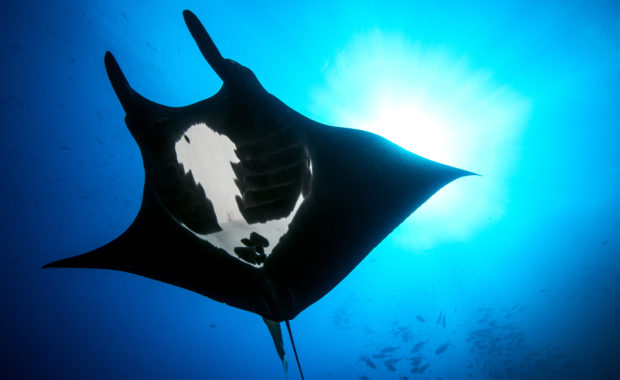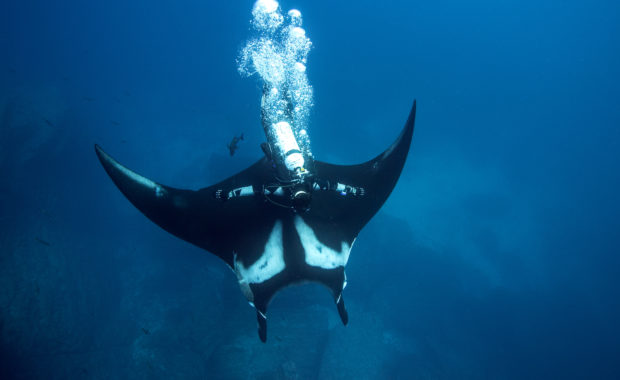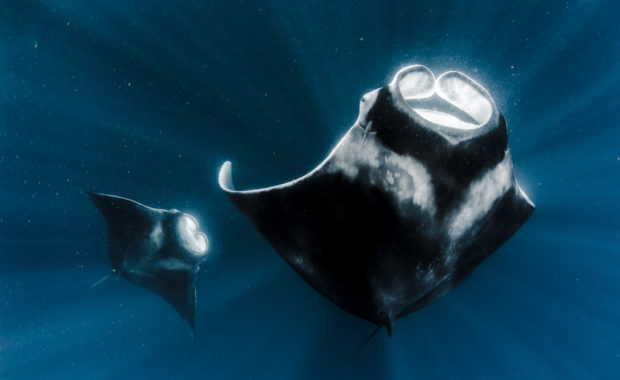Targeted fishing for their gills is the biggest current threat to manta rays
Demand in southern China for dried ray gill plates, used in an unproven health tonic, threatens global populations of slow-reproducing manta and mobula (devil) rays. From 2010 to 2013, the number of rays killed annually to supply the gill plate market tripled to 150,000. WildAid’s campaigns highlight the beauty of manta rays and alert consumers to the potential health risks associated with consuming their gill plates. We are working to raise awareness of the impact that gill plate consumption has on populations, to reduce demand in China, and to protect threatened rays through outreach and enforcement strategies.
- 150,000
The number of manta and mobula rays killed each year for their gill plates. - 99%
The city of Guangzhou, China is the market for an estimated 99% of gill plates. - -63%
A WildAid market investigation in Guangzhou found that gill plate stocks have fallen 63% since 2014.
Making an impact
WildAid has collaborated with Fuzhou Customs, the Fuzhou CITES Management Authority and the Guangdong fishery department to conduct comprehensive training courses for hundreds of customs officers, anti-smuggling police officers and fisheries enforcement officials. The trainings covered how to identify products from several protected species, including manta gill plates, and informed officers of recent changes in national and international laws that give additional protections to ray species.
In 2016, we conducted a market investigation, an online awareness survey of Guangzhou residents, and a follow-up phone survey of consumers who were first surveyed in 2014. The market investigation showed that gill plate stocks fell 63% since 2013. Meanwhile, the awareness survey found that 97% of participants are willing to stop buying and consuming gill plates, up from 91% in 2014. Further, 79% reported seeing WildAid’s ads in Guangzhou. The phone survey found that 67% of the re-surveyed respondents have stopped or reduced their consumption of gill plates since 2014. Of those who are consuming less, 75% are doing so as a result of our messaging.

